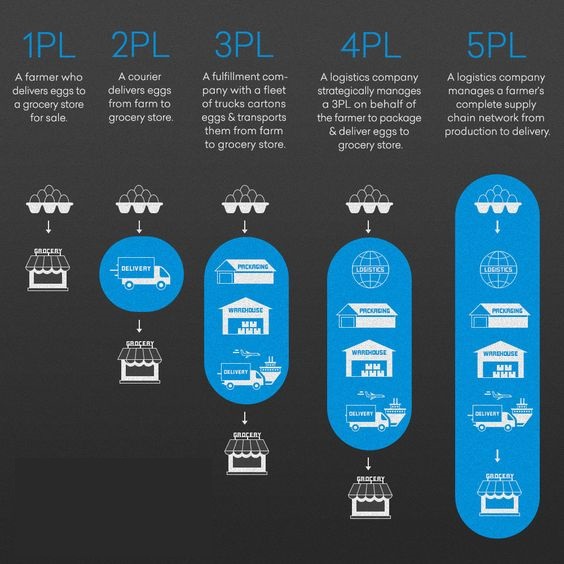Logistics, the lifeblood of global trade, is a complex domain comprising multiple layers. Each layer plays a crucial role in the overall efficiency and success of a supply chain. Understanding these layers can help logistics professionals, business owners, and students to navigate their operations more effectively. Let’s dive into the five layers of logistics and explore real-world examples.
First Layer: First Party Logistics (1PL)
The first layer of logistics involves companies that manage and control their own supply chain. These businesses transport goods using their own fleet and warehouse, giving them direct control over the process.
Example: Large retailers like Walmart use their own logistics systems to transport goods from warehouses to stores.
Second Layer: Second Party Logistics (2PL)
The second layer involves companies that offer specialized transportation services. These companies own assets like trucks, ships, or airplanes, which they lease to businesses needing transportation services.
Example: Shipping companies like Maersk fall into this category, providing maritime transport for clients worldwide.
Third Layer: Third-Party Logistics (3PL)
The third layer expands the scope to include warehousing, inventory management, packaging, and other value-added services. This reduces the need for companies to invest in their own logistics infrastructure.
Example: Companies like Maxtrans provide comprehensive logistics services, allowing businesses to outsource their logistics operations fully or partially.
Fourth Layer: Fourth-Party Logistics (4PL)
The fourth layer involves logistics management companies. These companies don’t own any assets but instead coordinate the logistics activities of various 3PLs to provide a seamless and efficient supply chain solution.
Example: Accenture, a global professional services firm, offers 4PL services by coordinating the logistics operations of its clients.
Fifth Layer: Fifth-Party Logistics (5PL)
The fifth layer focuses on supply chain management in the digital age. These companies leverage technology and data analytics to optimize the supply chain in a cost-effective and efficient manner.
Example: Companies like Flexport capitalize on digital platforms for logistics management, providing enhanced visibility, flexibility, and control for businesses.
In conclusion, the world of logistics is complex and multifaceted. Each layer plays a significant role in ensuring goods are transported efficiently and effectively. Understanding these layers is essential for anyone involved in logistics or supply chain management. As we continue to innovate and evolve, these layers will undoubtedly expand and adapt, further revolutionizing the logistics landscape. So, whether you’re a professional, business owner, or student, stay tuned, and keep exploring the fascinating world of logistics!

